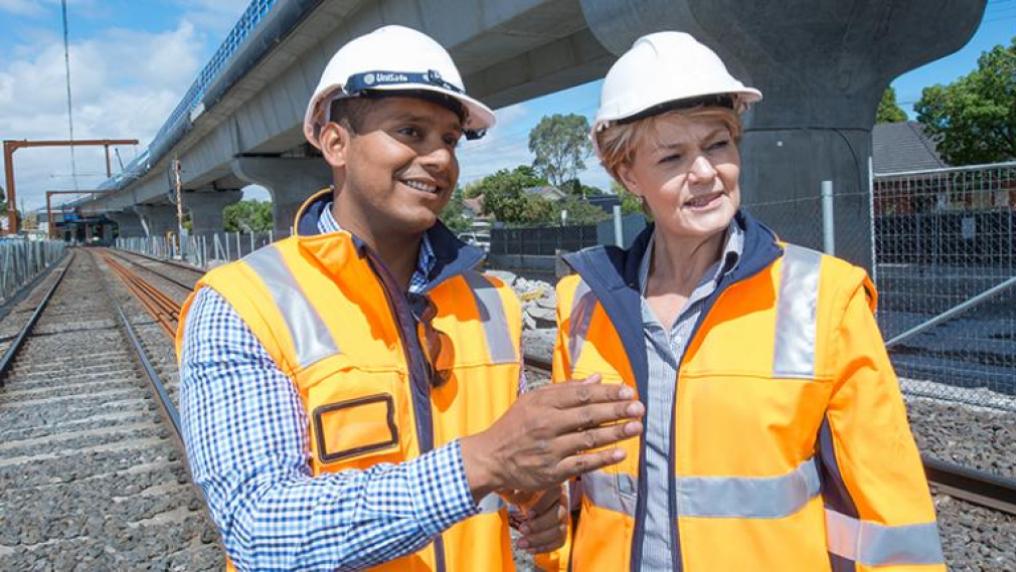Climate change, energy policy & practice
This program aims to apply economics in strategic long-term decision making in the areas of climate change, sustainability and energy policies.
It investigates key aspects of climate change and of rapidly emerging renewable technologies, as well as the policy and practice of adequate responses to these challenges.
This research is undertaken by the Victoria Institute of Strategic Economic Studies (VISES) and Victoria Energy Policy Centre (VEPC).
Victoria Energy Policy Centre
A major initiative in this area has been the establishment of the Victoria Energy Policy Centre led by Professor Bruce Mountain, and funded by the Victorian Government. It produces evidence-based, policy-focused research, primarily for the Victorian Government.
It has a high level of engagement with the Minister for Energy, Environment and Climate Change and her Department, and plays an influential role in the development of renewable energy policies in Victoria.
Impact of charging solar homes to export electricity to the grid
The Analysis of the Impact of Proposals to Change Solar Homes to Export Electricity to the Grid report critiques the Australian Energy Market Commission’s (AEMC) calculation of the impact of a proposed network-injection charge. This proposed charge will be a cost to households with rooftop photovoltaics (solar panels) when they export surplus rooftop solar generation to the grid.
Bruce Mountain demonstrates that it is likely that, at the price suggested, the great majority of solar homes in the National Electricity Market will receive little or no income for the surplus solar production that they export to the grid.
Climate change migration & adaptation
This research area has an interdisciplinary focus to understanding climate change risk, bridging science, economics and policy, particularly in developing methodologies for assessing adaptation and mitigation strategies for managing climate change risks.
Bushfire & natural hazards
Following the election of the Abbott Government, increased funding became available for bushfire and natural hazard research, partly via the Bushfires and Natural Hazards CRC.
Several projects funded were earlier work by Professor Jones and Celeste Young ‘Mapping and Understanding Natural Hazard Risk and Vulnerability at the Institutional Scale’ on developing an economic geography and decision-making framework to assist emergency service practitioners on shared ownership of risk.
Subsequent work is on increasing diversity in emergency services organisations titled ‘Building Strength and Capability through Diversity’ which aims to develop a framework that will assist better management and measurement of diversity and inclusion in emergency management organisations.
Recovery of diverse communities following bushfire
The project 'Understanding experiences and recovery capabilities of diverse communities in Gippsland post 2019–20' has been funded through Victoria University's planetary health initiative.
Natural hazards are becoming increasingly dynamic and novel, challenging recovery and resilience. The aim of this research is to understand the recovery experience of communities in Gippsland (Southern Victoria) following the bushfires of late 2019. It will identify factors that contribute to increasing vulnerability, or building resilience, of different cohorts within these communities.
Growing the Seeds
The Growing the Seeds report (PDF, 3.31 MB)provides a systemic assessment of the community, economic and risk landscapes in East Gippsland and Wellington Shires following the 2019/2020 bushfires.
Not only were they the worst fires on record for the region, but the COVID-19 pandemic has had a profound impact on how these communities are recovering.
The report focuses on community strengths and capabilities, and the emerging recovery needs in this unprecedented situation. It provides insight into the changing nature of disaster recovery in the face of increasingly intense and intersecting events facing communities.
Collaboration with China
Prior to Federal Government climate change funding cuts, Professor Peter Sheehan led a major program collaborating with the Chinese Energy Research Institute on climate change, energy and sustainability issues. Results were published in Nature Climate Change.
Following that, a report to the WA Australia China Natural Gas Technology Partnership Fund titled Transformation of Energy Markets: China in a Global Context (2016), discussed that as China and other countries sought to reduce the role of coal and oil in energy use, the interplay between renewables and natural gas over the period to 2030 would be shaping outcomes in many countries. The report provided an improved knowledge base, on the key global factors influencing China’s structural adjustment process and on the progress being made in China.
Research projects
- Victoria Energy Policy Centre (VEPC)
- Dept of Transport and Rail Manufacturing CRC: Reimagining the workforce: Building smart, sustainable and safe public transport
- Bushfire and Natural Hazard CRC: Building strength and capability through diversity
- Understanding experiences and recovery capabilities of diverse communities in Gippsland post 2019–20

Staff & students
Find out who's in our research group, and read our researcher bios via the links.
Staff
Students
- Abdulwahab Ahmad Bello (PhD)